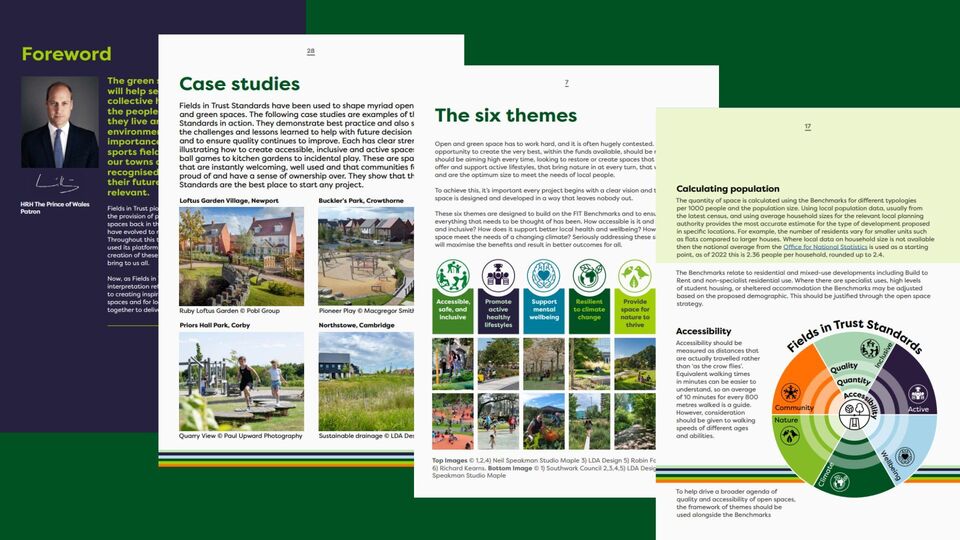

By Helen Griffiths, Chief Executive at Fields in Trust
With a new Government in place and housebuilding and planning reform at the top of the agenda there has been a lot of commentary on the role of green space over the last six months. Pressure to protect existing spaces, pressure to make sure new developments have access to sufficient green space and making sure that in navigating these issues the interests of people and the environment are fully aligned. Since the 1930s Fields in Trust’s Standards have existed to help address these challenges and so a reinterpretation at this moment is both timely and necessary.
We all know how important green space is. The role it plays in keeping us happy and healthy, physically active, connected to our neighbours and to the environment. And we know that green space has to work incredibly hard to deliver on multiple fronts. But despite their power these spaces are often an afterthought, squeezed to the margins or threatened by sale or development.
The original Six Acre Standard was created to provide a benchmark for the amount of open space required to meet the needs of local communities. Over time these standards have changed to reflect changing policy requirements but the need to deliver a quantum of space has been consistent.
Now, in this latest iteration we’ve taken a much bolder stance setting out that the purpose of the Standards to drive up quality and not hold down thresholds. We’ve listened to industry and to stakeholders to understand some of the challenges and limitations and, by introducing new elements, we’ve set out how the Standards can be used as the jumping off point to deliver the best possible outcome that reflects the needs of an individual community.

Making sure there is sufficient open and green space to meet the needs of communities is a critical starting point but alongside this calculation there are lots of other considerations to make. Asking the question ‘who have we left out’ is all important. Is it safe, accessible and inclusive? Does it actively support local health and wellbeing challenges? How is it meeting the needs of a changing climate and creating space for nature to thrive? By introducing 6 key themes to the FIT Standards that speak to all of these issues we are actively encouraging all these questions to be asked at the right time to shape the best outcomes.
“This latest interpretation reflects the need for a holistic approach to creating inspiring, inclusive and multi-functional space”
HRH The Prince of Wales, Patron
But there is more to do. Our ambition is to continue to evolve the Standards further working out how they can be adapted to add most value to the practitioners and stakeholders who use them and the communities who benefit from the spaces they create.
Next year Fields in Trust will celebrate its centenary and our founding purpose to secure access to playing fields and playgrounds and prevent open space being lost to industrialisation has grown ever more vital in the intervening years. Finding the levers to protect the future of our parks, playgrounds, sports fields and green spaces continues to guide our work and the Standards are a critical part of our legacy and a tool to influence in the future.
To do that we want to work more closely with the sector and are looking for partners to help us develop tools to deliver green space that aims high and includes everyone.